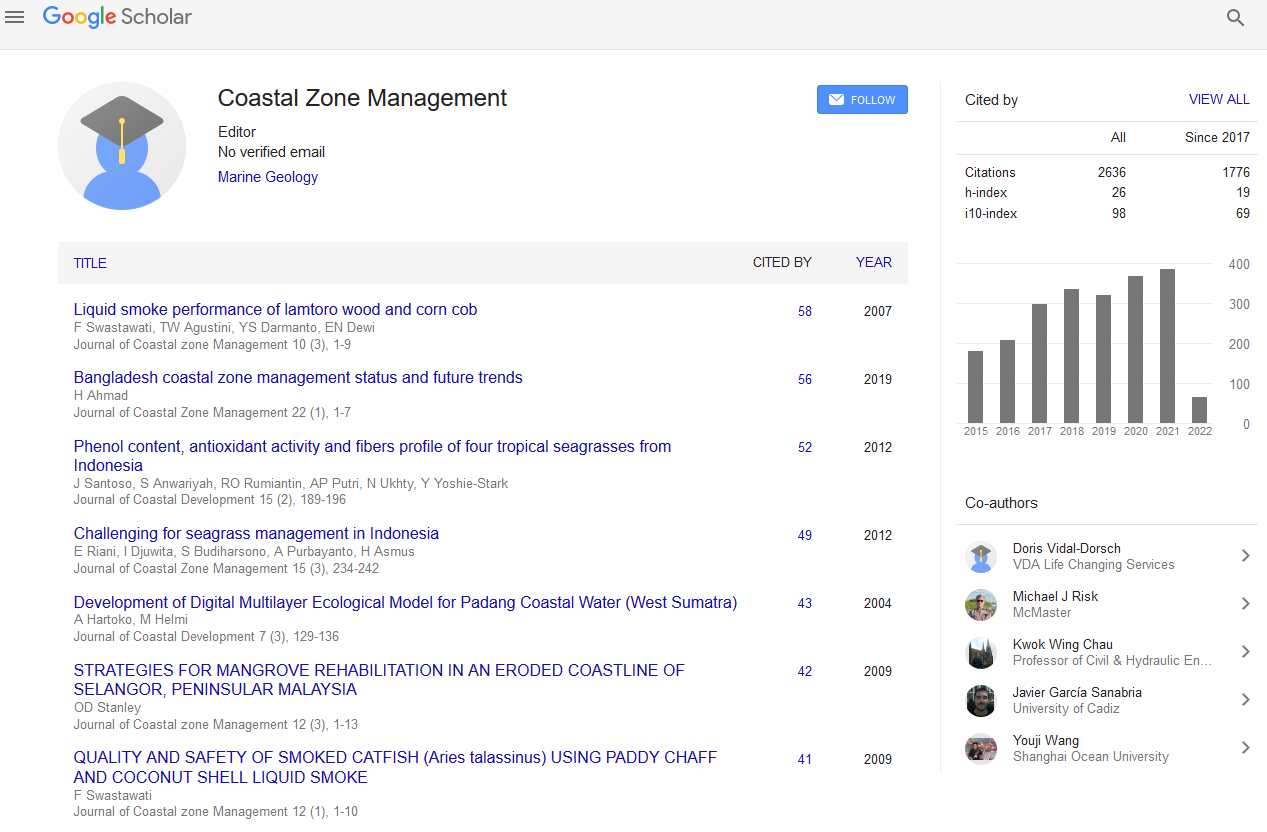Indexed In
- SafetyLit
- RefSeek
- Hamdard University
- EBSCO A-Z
- OCLC- WorldCat
- Publons
Useful Links
Share This Page
Journal Flyer

Open Access Journals
- Agri and Aquaculture
- Biochemistry
- Bioinformatics & Systems Biology
- Business & Management
- Chemistry
- Clinical Sciences
- Engineering
- Food & Nutrition
- General Science
- Genetics & Molecular Biology
- Immunology & Microbiology
- Medical Sciences
- Neuroscience & Psychology
- Nursing & Health Care
- Pharmaceutical Sciences
Natural hazard: Beach erosion countermeasures of beach erosion
2nd International Conference on Coastal Zones
July 17-18, 2017 Melbourne, Australia
Ho-Shong Hou
I-Shou University, Taiwan
Keynote: J Coast Zone Manag
Abstract:
Firstly, coast process of coastal morphology is explained graphically. Multi-functional utilization of coastal areas shows their particular features. Simultaneously coastal characteristics and coastal development in Taiwan are tabling and symbolizing their phenomena along east and west coast of Taiwan. Then beach erosion and coastal hazards are shown in local coast. Finally countermeasures against beach erosion from hard structure and soft method are presented. Beach erosion would produce three major bio-geophysical impacts in coastal areas: (1) Exacerbate storm flooding and damage, (2) Inundate and displace wetlands and lowlands, (3) Increase the salinity of soils and threaten freshwater aquifers and, (4) Exacerbate coastal squeeze ecosystems. There are various countermeasures in protecting beach erosion and the possible destruction of coastal properties. The present paper first addressed the causes of beach erosion and that result in coastal disasters. Typical examples of coastal defense around Taiwan coast were given to review the benefits of their functions. It is noted that hard structures designed to only minor storms but fail for a large storm such as typhoon events. Although a property is protected by a massive seawall, the adjacent shoreline erodes and retreat. It is concluded that the soft solutions are more harmonic to the coastal environment and reasonable approaches to shoreline protection are required if we are to maintain the coastal zone in an attractive form for recreational use.
Biography :
Ho-Shong Hou has worked for three years as a Hydraulic Laboratory Director and Chief Research Engineer. In 1976, he has received his PhD in Civil and Coastal Engineering at the University of Florida. He has then worked as the Director of the Graduate Institute of Harbor and Ocean Engineering at the National Taiwan Ocean University and as an Adjunct Professor of the Institute of Naval Architecture at National Taiwan University. He subsequently became the Deputy Director of the Harbor Research Institute in Taichung and become the Division Director of the Institute of Transportation of the Ministry of Transportation and Communications, for a total of 12 years. In 1995, he was promoted to Director-General of Department of Railways and Highways within the MOTC. In light of his outstanding engineering and administration background and achievements he was in December 1998 invited by Mayor of Kaohsiung to serve as Deputy Mayor. He was also subsequently appointed to the position of Chief Commissioner of the Kaohsiung City Election Commission. He is a Registered Civil and Hydraulic Engineer and an active Member of American Society of Civil Engineers. He was the President of PACON (2002-2008) International and a Life Member (2006).
Email: hshou.tw@gmail.com

